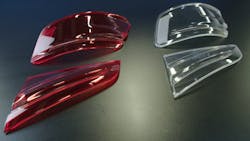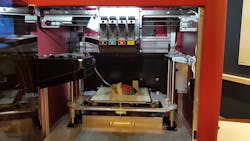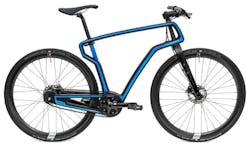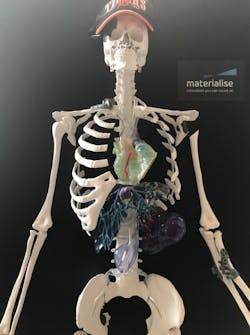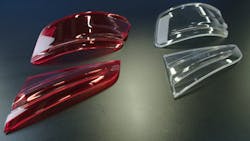3D Printing News: Motors, Materials, and Manufacturing
As 3D printing moves further into the realm of production parts, everything is getting an upgrade. A new motor driver is providing micro-stepping for smoother surface finishes for the printers. Materials continue to grow, and with stronger easier to print materials, more companies are starting to experiment with the technology. While this sounds exciting, it’s just a drop in the bucket compared to what’s been happening in the world of 3D printing.
Motors
3D printing is big, but one of the most important things is to start with the right foundation. For 3D printing this might be considered the hardware used to make the printer. A printer can only be as accurate or precise as the motors, drives, belts, ball screws, etc. that drive the machine. XYZ Printing had a leg up when they got started in 3D printing, as they are part of a larger company that makes all the electronics necessary to make its printers.
While color is great for artists and animators, it is also a great way to offer indicators, guides, instructions, safety guidelines, and wear marker to parts. With resolution from 100 to 400 microns, a gear could be printed so as the tooth surface wears another color will show. Once the color is visible, a technician could scan a code that is printed right on the part and order another one.
Having this in-depth knowledge and supplier connection is an obvious plus. But if you don’t have an electronics company, there are other options. Last month, STMicroelectronics launched the EVALSP820-XS. With this product, the company is offering a compact, cost-effective, and open source driver to expand the accessibility of 3D printing to makers, small businesses, and home users who use the process for fast prototyping, making replacement parts, or educational purposes.
The driver can use the Arduino Mega 2560 or Arduino DUE baseboard to provide basic control. With all the components being open source, users can plug-in their own choice of motor driver, extruder controller, and any other desired functions using Mega-compatible expansion shields.
As a plug-and-play expansion board, ST’s EVALSP820-XS can drive RepRap Arduino Mega Pololu Shield (RAMPS) print increase speed to improve throughput. In addition, with micro-stepping resolution from ½-step to 1/256-step per micro-step, new precise motors—such as this one—will improve surface smoothness on finished parts.
The board can be used in other projects, too: camera platforms, textile-manufacturing or sewing machines, medical devices, cash-handling machines, and so forth.
Materials
Once a printer can produce parts within tolerance and in a timely manner, it’s now up to the materials to have desired properties. Many materials companies have been focused on producing stronger polymers to use in plastic extrusion and vat processes. Some of the more notable materials are PEEK and Ultem. With a tensile strength of about 14 kips and 16.5 kips, respectively, these materials are also chemically stable and able to operate at higher temperatures than traditional 3D-printable materials.
However, this also requires a printer capable of achieve higher nozzle and bed temperatures to process these higher strength and temperature materials. For some materials it may be beneficial for the printer to have a controllable environment. This can minimize shrinkage or mitigate thermal discrepancies.
Arevo printed this bike out of carbon fiber using its printing technique. With about 30 engineers and 14 PhD’s this company has the brain power to change manufacturing.
Adding glass fill is possible with some materials. With just 30% fill, PEEK’s tensile strength is increased from 14 kips to about 24.6 kips according to Vanderveer Industrial Plastics. Some processes have even started working longer and continuous fibers into the process. Markforged combines a carbon fiber fill with continuous and chopped fiber by using two printer heads. This creates strong and light parts.
According to Markforged, its printer can make parts 23 times stronger. As an ongoing and increasingly important property, companies are turning to composites such as carbon fiber for lighter and stronger parts. However, carbon fiber often requires a lot of manual processes. If printers can print carbon fiber parts that rival hand laid-up parts, carbon fiber printing will be in large demand.
Recently, Arevo sat down with Machine Design to talk about its new carbon fiber printer. Like Markforged’s offering, it has a continuous fiber, but Arevo also focused on the software. By looking at the process from the software point of view, the fiber is laid in the best direction to increase a parts strength based on how the part is to be used. In addition, the fiber needs to be cut between layers, but the software also reduces the cutting of the fiber to only where it is necessary.
6-axis robots are increasingly being used in many industries. Viridis 3D uses a robotic arm to apply sand in layers, with binder agents jetted on to create large molds used for casting. Recently, this technology was featured at a The Materialise Experience to show the range in how people are using 3D printing.
This concept of using process data and thinking of the end-use is where industry is headed. Avero knows random fiber can improve strength, but controlling fiber orientation could make a part five times the strength of titanium at one third the weight. Avero is also taking manufacturing into consideration. With a prepreg carbon filament deposited by a robotic arm, floor space is reduced greatly while increasing the available build space. If a large build exceeds the reach of the robot arm, a gantry could be added.
Manufacturing
Industry continues to demand more. Micro-stepping printers and stronger materials are only a start. Features offered by the process to control parts on a voxel level are a growing trend. Around 2004, Mcor Technologies was one of the first companies that offered a printer that built up layers of cut paper to build a part. Models could be produced in full-color, but the only material to print in full-color was paper.
Then, about a year later, Stratasys launched its PolyJet printer. This offer full-color and variable durometer—stiffness—of a material would add value to new industries. Most recently the medical community has been using PolyJet to print 3D models for medical training and procedures. Materials are now being generated to try to mimic human tissue to assist students and doctors in surgery.
Freddie was printed in Materialise’s lab to show the capability of printing realistic organs, and tooling doctors are using to save time in the OR. Notice the gray pieces on the model’s right collarbone and left elbow area. These are drill guides that perfectly match the body, ensuring proper, faster placement of pins during surgery.
3D systems, Stratasys, and Materialise have all reinforced their commitment to the medical industry. With U.S. healthcare costs so high, reducing any time in the operating room ca save a lot of money. In addition, having materials that can be printed from CT or MRI scans let the doctors walk through the surgery in a 3D environment, giving them more confidence before going into the OR. Materials in 3D printing are not only expanding, but designers are becoming more creative with how they are used. The processes are adapting with the materials not just to print stronger more complex parts, but to print value.
The trend of voxel control is spreading. HP launched Multi-jet Fusion—a powder-binder-jet processes—and Rize is using inks to add color and reduce post-processing. Around 2016, Rize talked with MD about its new printer. The printer uses a new technique with inks to obtain color control at the voxel level and reduce post processing.
Recently at the Dassault Systemes event—Science in the Age of Experience 2018 in Boston—MD followed up with Rize. A representative said that 70% of the time associated with 3D printing is in pre- and post-processing. Rize’s technique looks to eliminate this by using the ink as a barrier between the support structure and part. This give the needed support structure, but helps the part detach from the support structure once it is finished printing.
This is a similar idea behind the new binder jet process used by Desktop Metal that hasn’t been released yet. Desktop Metal is a powder bed process, but the concept is the same. A barrier layer is printed between the part and the support, which greatly reduces post-processing.
While XYZ might be considered a Maker type printer, in 2017, it also showed that it was on par with 3D printing trends and moving into the industrial space. XYZ Printing offered an interesting solution by adding an inkjet to the da Vinci Color for full-color model using an extruded filament process.
Audi expects to reduce prototyping lead times by up to 50% using 3D printing.
With better hardware, software, materials, and other value-added features, the biggest problem keeping 3D printing from growing are the minds of the companies and engineers. Companies that look to adopt or partner with this technology will find a new competitive knowledge and way of thinking about problem solving. For example, earlier this month, Stratasys announced that Audi will leverage the Stratasys J750 to innovate its design process and accelerate design verification.
Manufacturing isn’t about producing parts: It’s about providing the end-user with value. Sometimes you don’t know what’s valuable until you’ve started thinking differently about the problem. 3D printing is starting to change the way industry thinks about manufacturing. The companies that will succeed with not be the strongest or the smartest, but those who are able to adapt quickest to change.
